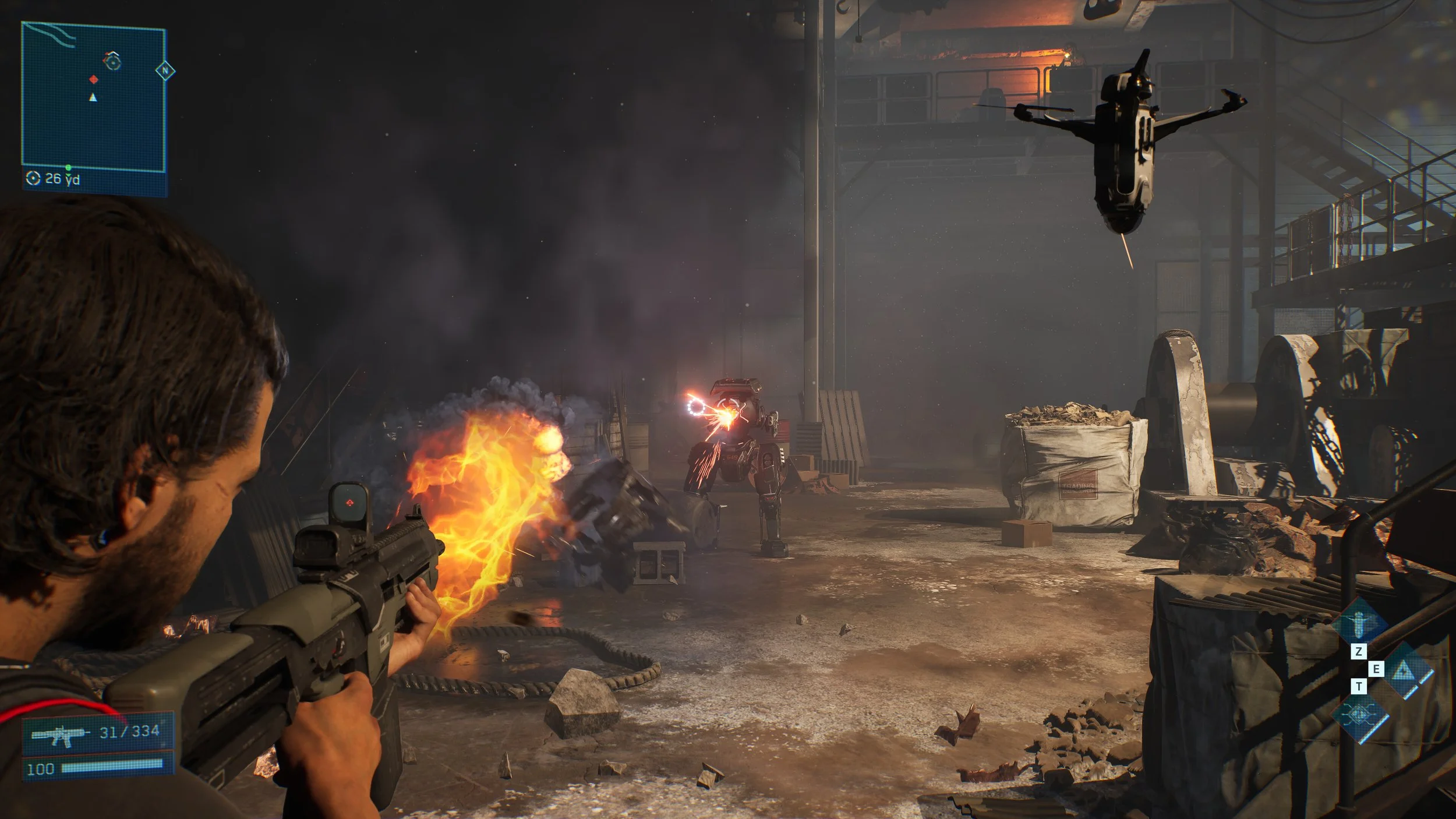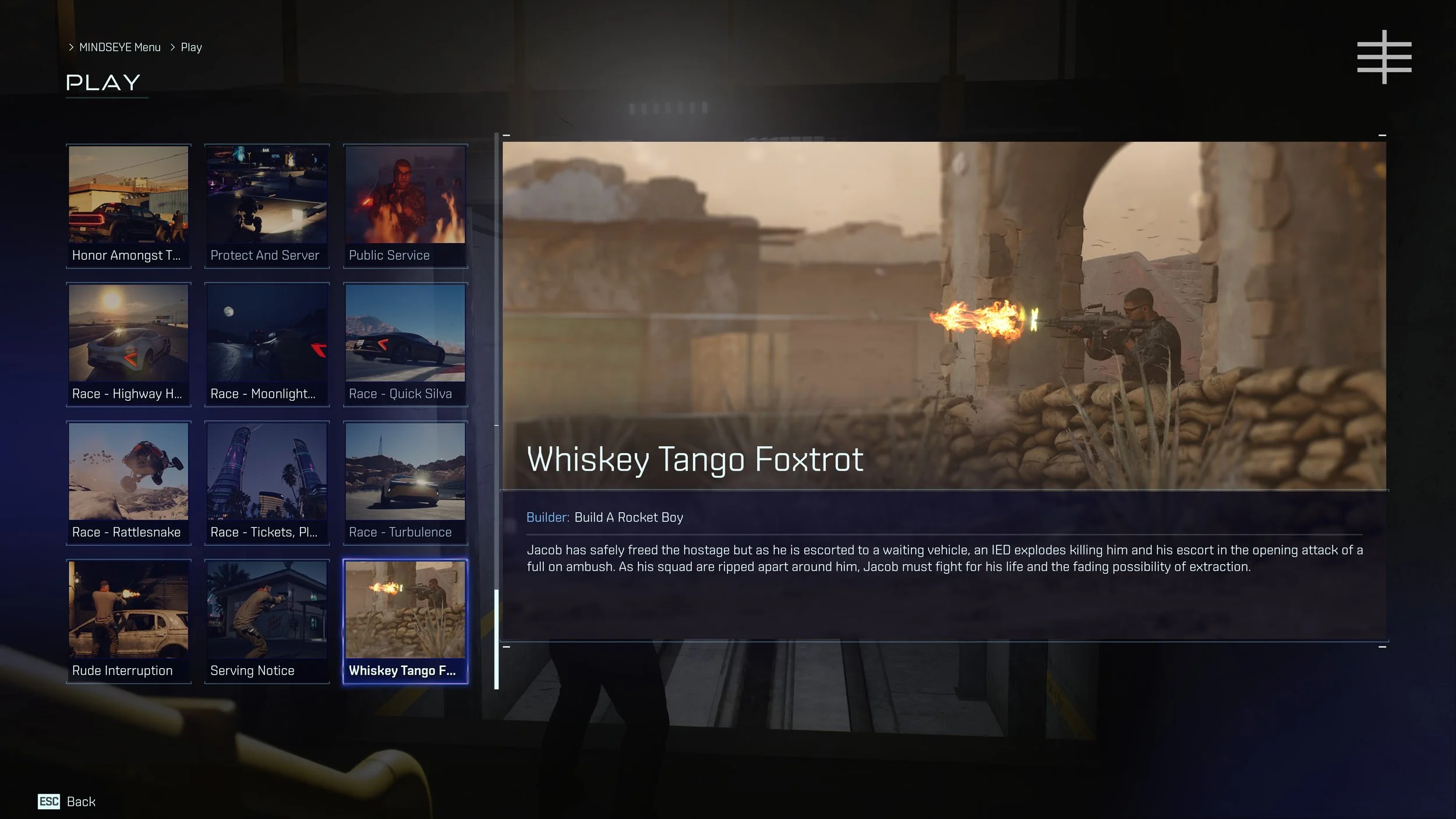Arcadia
During my time at Build A Rocket Boy, I worked on the third-person shooter Mindseye. It is a single-player cinematic adventure set in the city of Red Rock in the near future. The main draw of the game was the narrative and the editor that is accessible to players.
I worked with the in-house editor, called Arcadia, that is built on Unreal Engine 5. It was actively being developed while I worked with it and as such, I had open discussions on how to improve the editor with the tech-team. Having worked with multiple other engines was useful, since it allowed me to easily explain how a new function could work.
Open communication is very important to me, so I was always eager to improve the workflow and offer solutions whenever any blocker arose from a team, no matter the discipline.
Working with an editor that was actively being worked on had its challenges, since there were times when features were simply missing. This constraint forced me to be creative with my solutions. I created “Stamps”, which were our version of Unreal’s Blueprints, for the rest of the design team if they were in need of a similar function.
One example of a stamp I created was AI that guarded a specific area. If a player entered this area, the AI would follow the player telling them to get back and when the player exited the area, the AI would return to their guard station. If the player didn’t, the AI would start combat. Additionally I set up conditions that would make the AI allow the player to pass the area undisturbed. All this I made customizable for other designers, so they could use it how they would see fit.
Designing for an open world
Red Rock City, where Mindseye takes place, is a city in the middle of a desert in the USA, inspired by Las Vegas. To make the city feel alive I created numerous scenarios and scenes throughout the city.
The campaign of Mindseye takes place over a number of days and the city changes through the events of the game. Since time progresses, the scenarios had to take account for that. For example, a mechanic wouldn’t be open during the night. Since I’ve always loved to create immersive experiences, I always tried to imagine who the AI characters were. Having unhoused civilians looking for food, a customer being annoyed that a vending machine isn’t working or a gangster doing target practice on a couple of bottles.
Since the campaign of Mindseye is linear, I had to account for which routes a player could take and what would be in their field of view. We in the design team also communicated daily regarding what we were working on, so our scenes didn’t clash with each other. For example, if one designer was creating a race through an alley, another designer should be aware of that and not create a scene that would block the road for the race.
To give the world more variety in the scenes, I created many of them with variation that had a random chance to spawn each version. That way it wasn’t the same model that was drinking coffee at the exact same place each time a player went by.
Since the game is out on multiple systems, I always accounted for system requirements. Balancing a scene being interesting while also making sure it isn’t too rescource heavy required a lot of testing and communication with QA. I also had to keep in mind when I could trigger a scene to spawn and despawn out of sight for the player, while also accounting for it not to be spawned if it can’t be seen.
prototyping & Scripting
Apart from the scenes in the open world, I also worked on new game modes for the game. These game modes could be quite different from the usual game flow of Mindseye. They were smaller self contained experiences that could range from races to high-score chasing target practice.
The one mode I can write about is the most well-known mode, called Free Roam. I prototyped the Free Roam-mode, where I placed side-missions throughout the city that the player could access, created a system to spawn vehicles to the player after each of these missions were completed, along with a respawn system for the player in case they died.
Closing Thoughts
My technical abilities have improved greatly during my time working on Mindseye and I enjoy coming up with creative solutions to the problems that arise during development of a game. It is always rewarding working together with people on a shared goal, trying to improve the work flow for each other and making the best we can with what we have.



